-
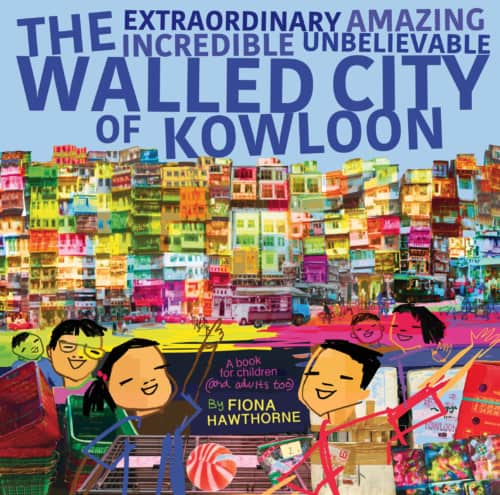 Imagine living in a high-rise mini-city that people built with their own hands. This city took up only the size of a sports stadium, but it was home to sixty thousand people! What would it be like to live in the most tightly packed place on Earth? Fiona wanted to find out, so she went there to paint, draw and meet the people of the amazing Kowloon Walled City. There was nowhere else in the world like it. The extraordinary things she discovered are inside this book… Based on Fiona Hawthorne's real-life experiences in the famous Walled City of Kowloon, this is a children's book which is also for adults. A young female artist ventures into a place that everyone tells her is dangerous, but she spends time getting to know the people, and draws and paints their everyday lives. By doing so, she discovers the truth: that the Kowloon Walled City was industrious, child-friendly and welcoming. Even though the Walled City was very much Hong Kong, this story of discovery and acceptance is universal. Vibrant, colourful, detailed artwork depicts the busy life of a unique community that no longer exists.
Imagine living in a high-rise mini-city that people built with their own hands. This city took up only the size of a sports stadium, but it was home to sixty thousand people! What would it be like to live in the most tightly packed place on Earth? Fiona wanted to find out, so she went there to paint, draw and meet the people of the amazing Kowloon Walled City. There was nowhere else in the world like it. The extraordinary things she discovered are inside this book… Based on Fiona Hawthorne's real-life experiences in the famous Walled City of Kowloon, this is a children's book which is also for adults. A young female artist ventures into a place that everyone tells her is dangerous, but she spends time getting to know the people, and draws and paints their everyday lives. By doing so, she discovers the truth: that the Kowloon Walled City was industrious, child-friendly and welcoming. Even though the Walled City was very much Hong Kong, this story of discovery and acceptance is universal. Vibrant, colourful, detailed artwork depicts the busy life of a unique community that no longer exists. -
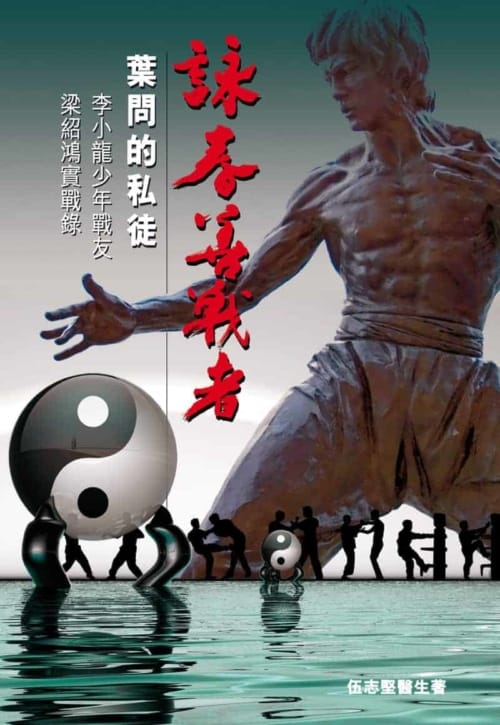
(Go to English edition)
梁紹鴻,Duncan Leung,詠春善戰者。由兒時好友、已故電影巨星李小龍介紹去學詠春功夫。1955年,年僅十三歲的他以「三跪九叩」之禮,拜詠春第六長門代葉問為師,成為葉問的「第一私家門徒」。
1955至1959這四年間,葉問親自上門,悉心教導梁紹鴻,傾囊相授,跟他練習,還傳授「實踐」詠春的秘訣。梁紹鴻天天練武、練功六小時;要學以致用,他就上街打架、上武館「講手」,實踐所學。他對中國武術各門各派的打鬥經驗可謂獨一無二。
1964年,一次行俠仗義令梁紹鴻有緣遇上一位老人。那老人教他「空手入白刃」、「貼身搏擊」、「無聲殺敵」等技巧。
1974至1976年,梁紹鴻在美國紐約設館授徒。中、外習武者上館挑戰可謂無日無之,他未嘗敗北,因此應付外國武藝的經驗也相當豐富,可謂世上絕無僅有。
1976至2002年間,梁紹鴻在美國弗吉利亞灘 (Virginia Beach)定居,受聘於美國海軍海豹隊(U.S. Navy Seals)、美國聯邦調查局( FBI )及美國特警部隊 (SWAT)。
2002年8月,梁紹鴻接受可能是他有生以來最大的挑戰:要在兩年內,培養六名中國少年成為世界級職業「散打」拳手。於是,他到了中國去完成這能人所不能的使命。
-
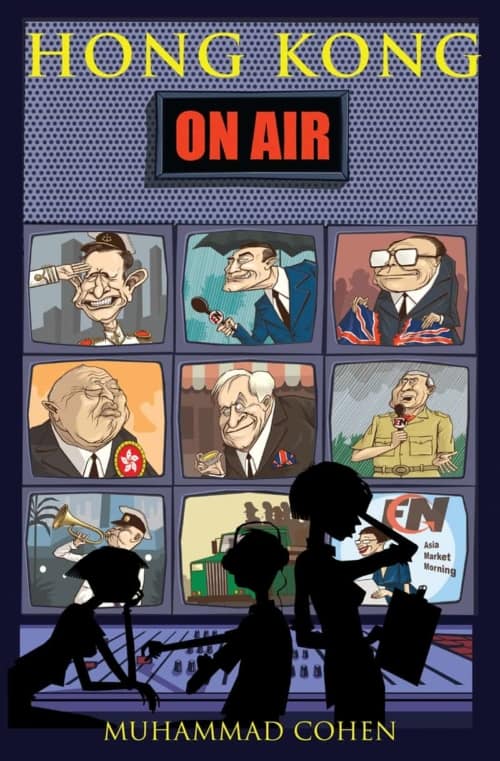
As the Hong Kong handover boom fizzles into the Asian economic bust, a young American couple's marriage and careers tumble into a maze of television news, betrayal, high finance, and cheap lingerie.
TV news veteran Muhammad Cohen's engaging, often hilarious novel captures the mood ahead of the July 1997 handover when Hong Kong reigned as the centre of the universe, a multicultural melting pot bubbling with pure gold. As the Asian crisis abruptly ends the party, mainland China emerges, eclipsing Hong Kong. For everyone whose job or business falls under China's lengthening economic shadow, Hong Kong On Air presents a fresh angle on how it all began. For media watchers, Hong Kong On Air broadcasts the backstage secrets of television news the way The Amazing Adventures of Kavalier & Clay illustrated the dark side of comic books.
For newspaper reporter turned TV producer Laura Wellesley, the morning show at Franklin Global Networks Asia means going to bed before dark and swallowing the first rule of broadcast news: the anchor is always right, especially when it's American-born Chinese egomaniac Deng Jiang Mao. The station's fortunes and Laura's outlook improve with the arrival of Peter Franklin, the 28-year-old son of FGN's billionaire founder. But Franklin's eye falls on mainland-born graphics drone Pussy, Laura's control room nemesis, and a butterfly emerges from the web he spins.
For Laura's husband Jeff Golden, the production line for his Golden Beauties lingerie runs through a cagey mother minding their stores on Long Island, cookie tins stuffed with cash smuggled over the border, and hot tubs in Hong Kong's Jewish Community Club and mainland brothels. Cut out of his own multi-million dollar deal, Jeff's consolation prize is Yogi, a Japanese banker with a yen for "Jew food" and men raised on it.
During Hong Kong's pre-handover boom, FGN Asia becomes a hit, a star is born, and mistakes are easy to overlook. But the economic crisis ripens relationships for treachery, creates opportunities for revenge, and moves China centre stage, triggering a great leap forward for some, a long march to failure for others.
-
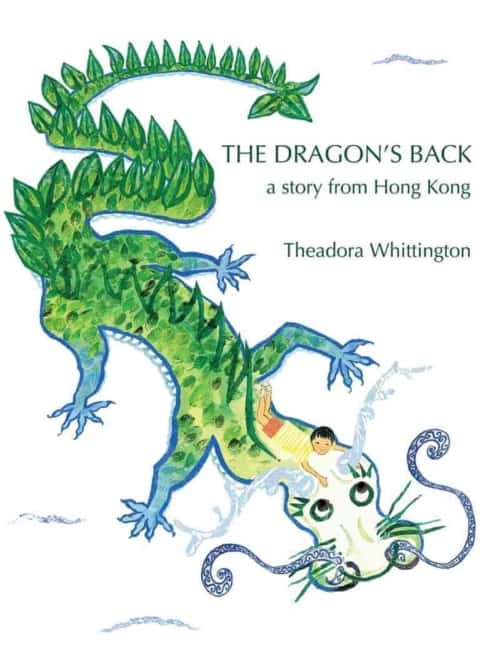
by Theadora Whittington
Chinese fung shui tells us there is a dragon inhabiting every green valley, protective of the mountains and its route to the sea.
Hiking into the hills of Hong Kong for a weekend picnic, Luke and his parents suddenly find their path blocked by a forest fire. Can the friendly mountain dragon help? Or is the mythical creature equally at risk from the actions of careless human beings?
With original painted art, and a cut-out dragon for children to make themselves, The Dragon’s Back sends a gentle message of caring for the environment.
-
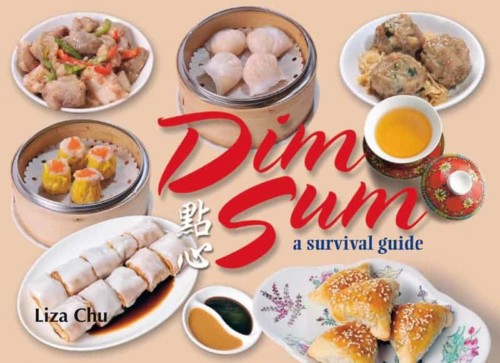
Siu mai, har gow, jar leung, sin jok guen. These are all types of dim sum. But do you know what they look like, and what’s in them? Can you pronounce their names in Cantonese, or recognize them on a menu? Can you confidently order dim sum for you and your friends — especially if any of them have dietary restrictions?
Australian-Chinese writer Liza Chu has a part-time career as a Hong Kong dim sum guide. She has distilled her knowledge of Cantonese cuisine and Chinese dining etiquette into this practical guidebook to delicious dim sum. Each photographed dish is identified with Chinese characters and a pronunciation guide. Icons alert those with allergies or special diets, and there’s a special listing of dim sum dishes most popular with children. Master chefs explain their cooking methods, and even the art of tea drinking is covered in detail.
Take this book to your nearest dim sum restaurant and let Liza show you how to yum cha like a local!
-
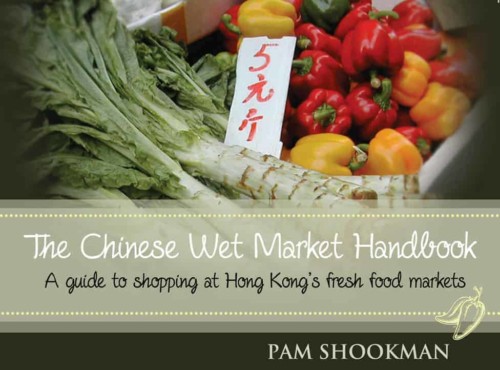
Have you ever wondered about that wacky-looking fruit staring back at you in the local wet market? Or did you want to know how to cook a particular Chinese vegetable, but don’t have the language skills?
The Chinese Wet Market Handbook gives you the answers! This pocket-sized guidebook, designed to be taken out shopping with you, identifies fresh produce commonly found at Hong Kong’s food markets.
Each item is identified by a photo, its English name, its romanised Cantonese name with tones, and its name in full-form Chinese characters. The guide explains traditional signage in Chinese characters, including weights and measures, and indicates whether a food is locally produced. Finally, it describes ten lively Hong Kong wet markets especially worth visiting and provides directions on how to find them.
Whether you’re a Hong Kong resident who wants to shop at food markets but lacks the linguistic and culinary know-how, or a tourist who wants to explore the local culinary sights, this handy guide will help you navigate your way around one of the liveliest and most colourful parts of Hong Kong’s food scene.
Look inside this book
Click on the below links to view sample pages from The Chinese Wet Market Handbook. You will need a pdf reader to view these excerpts.pages 2-11 (fruit) pages 23-29 (vegetables) pages 71-75 (dried foods)
-
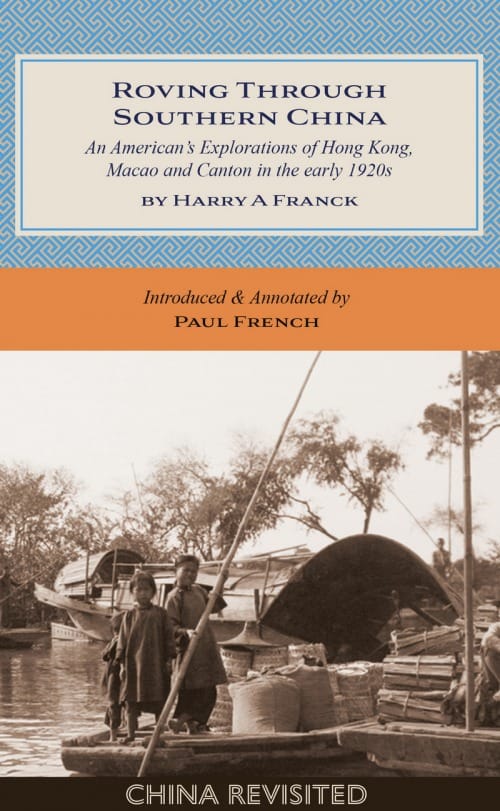 By Harry Franck, introduced and annotated by Paul FrenchNo. 4 in the China Revisited seriesIn the 1920s the American travel writer Harry A Franck was known to readers as the “Prince of Vagabonds”. His wanderings were family affairs and he arrived in southern China in 1923 with his wife, their two young children and his mother. Franck always claimed that his travel plans were random, subject to chance encounters and whatever caught his eye.He arrives in a Hong Kong which is building modern department stores and large houses while labourers sleep on straw mats beside the harbour. In Macao he visits temples, ancient forts and, of course, casinos. And then to Canton (Guangzhou), a city in flux where new buildings are transforming the waterfront, the ancient city walls are being demolished, and the traditional rookeries of small lanes are being replaced by wide asphalt roads as the city rapidly modernises. Franck also provides us with a highly detailed description of Shamian Island a year after the tumultuous strikes and boycotts that meant naval gunboats and barbed wire still protected the small foreign enclave.
By Harry Franck, introduced and annotated by Paul FrenchNo. 4 in the China Revisited seriesIn the 1920s the American travel writer Harry A Franck was known to readers as the “Prince of Vagabonds”. His wanderings were family affairs and he arrived in southern China in 1923 with his wife, their two young children and his mother. Franck always claimed that his travel plans were random, subject to chance encounters and whatever caught his eye.He arrives in a Hong Kong which is building modern department stores and large houses while labourers sleep on straw mats beside the harbour. In Macao he visits temples, ancient forts and, of course, casinos. And then to Canton (Guangzhou), a city in flux where new buildings are transforming the waterfront, the ancient city walls are being demolished, and the traditional rookeries of small lanes are being replaced by wide asphalt roads as the city rapidly modernises. Franck also provides us with a highly detailed description of Shamian Island a year after the tumultuous strikes and boycotts that meant naval gunboats and barbed wire still protected the small foreign enclave. -
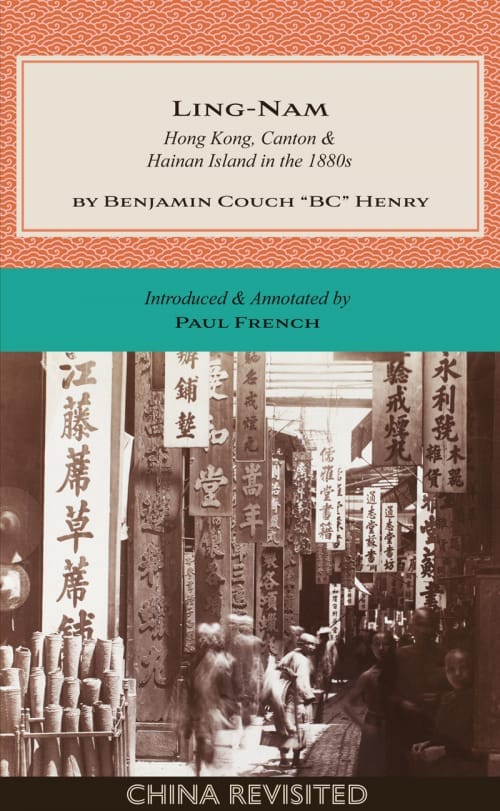 By Benjamin Couch 'BC' Henry, introduced and annotated by Paul FrenchNo. 3 in the China Revisited seriesBenjamin Couch “BC” Henry was a missionary in Hong Kong and southern China in the second half of the 19th century. He arrived in 1873 and remained until 1894. Yet he was much more too – a keen observer, a skilled naturalist and an intrepid explorer. His fascination with the flora and fauna of Hong Kong and southern China are obvious throughout the pages of LING-NAM.The bulk of his career in China was spent in what was then commonly known as “Ling-nam”, the Pearl River Delta and environs of Guangzhou. These excerpts of Henry’s travelogue LING-NAM, published in 1886, contain one of the most detailed walking tours of Guangzhou that has survived. Similarly so his travels through the silk, tea and market garden regions adjoining the metropolis. Abd finally, we have Henry’s ground-breaking account of his expeditions around Hainan Island in 1882, then the most extensive undertaken to date by a foreigner. He was also a keen anthropologist interested in the island’s various ethnic groups, such as the Lois, as well as the various languages and dialects of Hainan. Henry’s portrait of southern China was built up over 20 years work and exploration in the region and provides one of the most in-depth looks at southern Chinese life from the growth of Hong Kong, to the bustling streets of Guangzhou, to Hainan’s “Island of Palms”.
By Benjamin Couch 'BC' Henry, introduced and annotated by Paul FrenchNo. 3 in the China Revisited seriesBenjamin Couch “BC” Henry was a missionary in Hong Kong and southern China in the second half of the 19th century. He arrived in 1873 and remained until 1894. Yet he was much more too – a keen observer, a skilled naturalist and an intrepid explorer. His fascination with the flora and fauna of Hong Kong and southern China are obvious throughout the pages of LING-NAM.The bulk of his career in China was spent in what was then commonly known as “Ling-nam”, the Pearl River Delta and environs of Guangzhou. These excerpts of Henry’s travelogue LING-NAM, published in 1886, contain one of the most detailed walking tours of Guangzhou that has survived. Similarly so his travels through the silk, tea and market garden regions adjoining the metropolis. Abd finally, we have Henry’s ground-breaking account of his expeditions around Hainan Island in 1882, then the most extensive undertaken to date by a foreigner. He was also a keen anthropologist interested in the island’s various ethnic groups, such as the Lois, as well as the various languages and dialects of Hainan. Henry’s portrait of southern China was built up over 20 years work and exploration in the region and provides one of the most in-depth looks at southern Chinese life from the growth of Hong Kong, to the bustling streets of Guangzhou, to Hainan’s “Island of Palms”.“Drifting slowly by a large collection of flower-boats, gay with lamps and mirrors, and richly furnished with black-wood sofas and embroidered curtains… Dire confusion is often created among the slipper-boats, whose anchorage adjoins, by the surging of the steamer against their outer lines, causing them to jump, and sputter, and dart about like a swarm of ants, shell-like craft, whilst they vociferously hurl maledictions at the great steamer.”
-
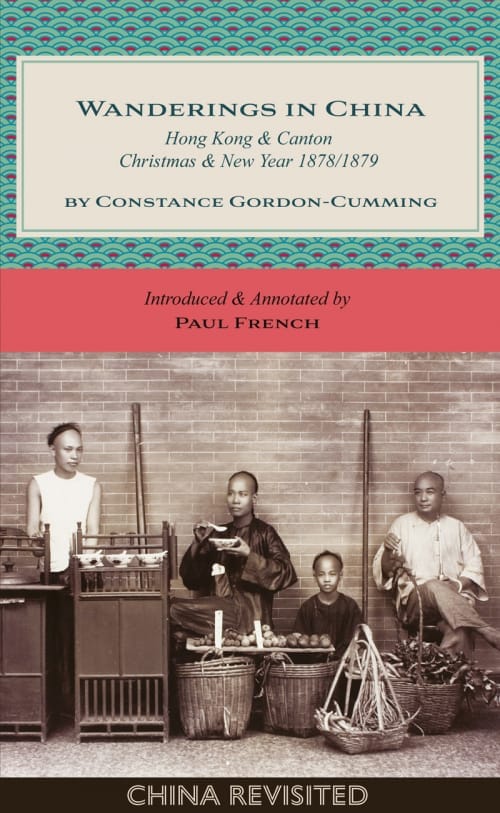 By Constance Gordon-Cumming, introduced and annotated by Paul FrenchNo. 2 in the China Revisited seriesInveterate Victorian traveller and prolific artist Constance Gordon-Cumming, born in Glasgow in 1837, roamed far and wide from the Scottish Highlands to the American West; the islands of Hawaii to southern China. Even among her many adventures, her 1878/1879 trip to Hong Kong was momentous. Gordon-Cumming arrived just before Christmas 1878 to inadvertently witness the terrible “Great Fire” of Hong Kong that swept devastatingly through the Central and Mid-Levels districts.She then moved on to explorations of the streets, temples and Chinese New Year festivities in Canton (Guangzhou). Her detailed descriptions of the teeming streets of the city’s commercial districts and New Year temple fairs contrast with her temporary residence in the relative calm of the foreign enclave on Shamian Island. Venturing out of the city on expeditions, Gordon-Cumming gives us perhaps one of the most complete descriptions of the now long-gone market gardens of Fa-tee with the famed nurseries that cultivated a bewildering variety of flowers and ornamental trees.
By Constance Gordon-Cumming, introduced and annotated by Paul FrenchNo. 2 in the China Revisited seriesInveterate Victorian traveller and prolific artist Constance Gordon-Cumming, born in Glasgow in 1837, roamed far and wide from the Scottish Highlands to the American West; the islands of Hawaii to southern China. Even among her many adventures, her 1878/1879 trip to Hong Kong was momentous. Gordon-Cumming arrived just before Christmas 1878 to inadvertently witness the terrible “Great Fire” of Hong Kong that swept devastatingly through the Central and Mid-Levels districts.She then moved on to explorations of the streets, temples and Chinese New Year festivities in Canton (Guangzhou). Her detailed descriptions of the teeming streets of the city’s commercial districts and New Year temple fairs contrast with her temporary residence in the relative calm of the foreign enclave on Shamian Island. Venturing out of the city on expeditions, Gordon-Cumming gives us perhaps one of the most complete descriptions of the now long-gone market gardens of Fa-tee with the famed nurseries that cultivated a bewildering variety of flowers and ornamental trees.Finally Gordon-Cumming returns to Hong Kong to observe the annual "Derby Day" races at Happy Valley in February 1879, a major event on Hong Kong’s Victorian-era social calendar. Gordon-Cumming is at one and the same time that rare travel writer who, while plunging into the throngs and crowds, manages to observe the minutiae of life around her.
“The flames rapidly gained the mastery, suddenly bursting from fresh houses here and there, where least suspected, and spreading from street to street. That night we stood watching this appallingly magnificent scene – the flames rising and falling, leaping and dancing, now bursting from some fresh house, shooting up in tongues of fire, now rolling in dense volumes of black smoke.”
-
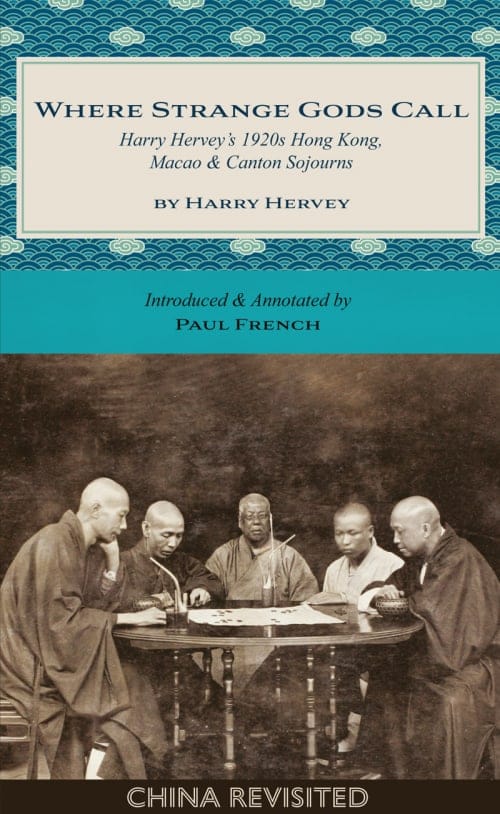 By Harry Hervey, introduced and annotated by Paul FrenchNo. 1 in the China Revisited seriesAs a young man in the southern United States in the early years of the twentieth century Harry Hervey dreamt of travelling to Asia. He also dreamt of writing novels, movie scripts and travel books. He would do all these things. Eventually, in 1923, Hervey managed to find a way to get to the Far East working on a cruise liner. He was to spend time sojourning in Hong Kong, Macao and Guangzhou. His impressions of his travels through southern China, contained in his 1924 travelogue Where Strange Gods Call, is both lyrical and detailed, as well as atmospheric and informative. Walking from Central to Kennedy Town; the basement “dives” of Belcher’s Street to the private dining rooms of Queen’s Road; Macao’s Praia Grande to its infamous fan-tan houses, Hervey is a fascinating flâneur and guide. So too in Guangzhou, a city in upheaval, where Hervey encounters those fleeing warlord violence in the north and is granted an audience with Dr Sun Yat-sen.Hervey’s impressions of China would stay with him for the rest of his life, not least in his treatment for the 1932 movie Shanghai Express. Sadly, in the intervening century since the first publication of Where Strange Gods Call in 1924, Hervey’s name and work have been largely forgotten. Yet his early travel writing was to influence his later bestselling novels, popular short stories and Hollywood screenplays which, in turn, influenced American perceptions of Hong Kong, Macao and China.
By Harry Hervey, introduced and annotated by Paul FrenchNo. 1 in the China Revisited seriesAs a young man in the southern United States in the early years of the twentieth century Harry Hervey dreamt of travelling to Asia. He also dreamt of writing novels, movie scripts and travel books. He would do all these things. Eventually, in 1923, Hervey managed to find a way to get to the Far East working on a cruise liner. He was to spend time sojourning in Hong Kong, Macao and Guangzhou. His impressions of his travels through southern China, contained in his 1924 travelogue Where Strange Gods Call, is both lyrical and detailed, as well as atmospheric and informative. Walking from Central to Kennedy Town; the basement “dives” of Belcher’s Street to the private dining rooms of Queen’s Road; Macao’s Praia Grande to its infamous fan-tan houses, Hervey is a fascinating flâneur and guide. So too in Guangzhou, a city in upheaval, where Hervey encounters those fleeing warlord violence in the north and is granted an audience with Dr Sun Yat-sen.Hervey’s impressions of China would stay with him for the rest of his life, not least in his treatment for the 1932 movie Shanghai Express. Sadly, in the intervening century since the first publication of Where Strange Gods Call in 1924, Hervey’s name and work have been largely forgotten. Yet his early travel writing was to influence his later bestselling novels, popular short stories and Hollywood screenplays which, in turn, influenced American perceptions of Hong Kong, Macao and China.This publication of Hervey’s impressions of southern China also includes the sketches of his good friend the Savannah artist Christopher Murphy Jr., which were included in the first edition of Where Strange Gods Call and bring Hervey’s descriptions further to life.
“Approaching Canton we were gliding past ugly, ramshackle dwellings and go-downs; grass-thatched house-boats, sampans, junks, and lighters, and millions of roofs that were flung in uneven terraces against the sky.”